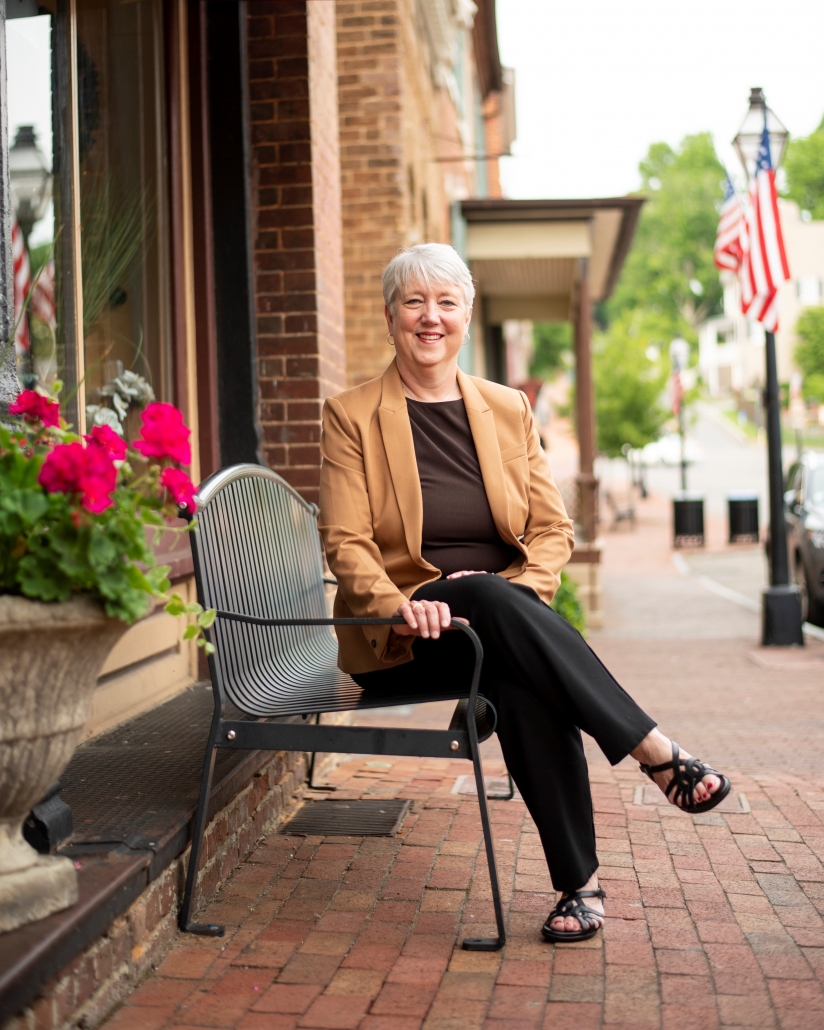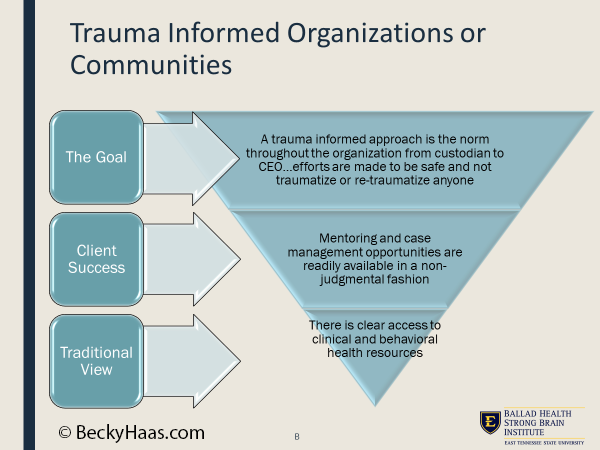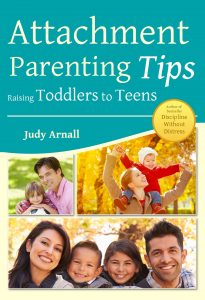Becky Haas Interview with API for AP Month 2020:
Parenting with PEACE, Part 3 of 3
You’re a parent and this is a community of parents that we’re talking to, and people who serve parents. We’re providing individual help as well as getting communities together, working in coalitions, working in small groups. Mostly, it’s individual parents, day to day, navigating life with their children. What would you want them to know about ACEs? What kinds of messages are you sharing with parents?
That’s a fabulous question. I’m the mother of two sons who are married and grown now. When I was preparing to have our first child, I remember thinking to myself, I have a wonderful mother. I feel I had a good childhood and all, but I remember thinking as I carried that child, of all the things I’ve ever done in life, any jobs or volunteerism, it came with training. Being a mother did not come with any training. I felt it was the most important thing I was entering into in life. I applaud the work of the Attachment Parenting International community in the fact that you all are having conversations around things that many more families need to understand. What we see now with ACEs is how the fulcrum is slanted in a negative way because that attachment was not there.
In 2010, the Tennessee census revealed…that 11% of Tennessee grandparents had custody of children 18 years and younger.
The other thing that we’re seeing is that there can be a hybrid attachment, that it can be community members or foster parents, but that attachment has to happen for a child to grow up. I didn’t know about attachment until my boys were grown and married, but I have two grandchildren that are four and two. I’ll tell you, I never read a book to them without thinking about ‘serve and return.’ If they fall down, I am there lickety-split, which I would have been anyway. But now I know that the way they’re learning self-regulation it starts first with external regulation. Then they’re going to learn co-regulation then it’s going to be self-regulation. Now, with my two-year-old grandson, it’s all that. “Nammy” is what they call me. The four-year-old, if she’s watching a movie with me, she knows where the comforters are. She’ll say, “Nammy, I’m cold.” I’ll say, “Well, go get a blanket,” and she’ll go get it. And then there’ll be a time where she won’t even ask, she’ll just run, go get the blanket. I didn’t know what all that was until I learned about ACEs.
That’s so encouraging for parents, and grandparents too. Even though you didn’t know about it before, you take the information you get along the way and you start to apply it.
I didn’t realize how much grandparent care and custodial care there was until I worked at ETSU in car seat safety. In 2010, the Tennessee census revealed (a new number on the census I understand) that 11% of Tennessee grandparents had custody of children 18 years and younger. We’ve been super slow on getting support for the grandparents now that they are raising grandchildren, or those aunts or uncles. It also impacts the community because of instead of retiring, now you’re starting over raising grandchildren because their mom and their dad are in the drug culture.
A child needs in their life two or three adults; they need more than just the parent.
There is no guidebook, as you mentioned, but with the Principles API has, we talk about preparing for pregnancy, childbirth, and parenting – growing in your knowledge. We share with parents about feeding our children with love and respect, about healthy eating. We help parents understand about responding with sensitivity, which is the hallmark of attachment, as well as providing consistent and loving care. We discuss how it’s important to practice serve and return, and not to have ever-changing childcare figures because that primary early secure attachment is so critical. We guide parents about sleep because sleep can be challenging for parents and for children, especially with separations. We address positive discipline: what’s really effective, including learning to parent with creativity, patience, responsiveness, and curiosity.
We help parents foster good relationships and not chip away at that attachment relationship as children grow because you’re teaching them to problem solve, not using a heavy hand to ‘handle’ them. Then we talk about balance and the family, parenting together and in community, as well as self care. All of this to foster positive childhood experiences, which is not just referring to a good day out at the park or going to Dollywood, although those are nice. It’s really more about creating stability, predictability, connections, support, play, memories, and traditions that are vital to strong, secure, and stable environment for a child to grow and optimally develop.
When I get a chance to talk to parents, some of my work in training school districts, I’ve had a parent night and I’ll have maybe 30 minutes. Always, my go-to is protective factors, that parents understand that a child needs to have a healthy relationship with a teacher or an uncle or a coach. A child needs in their life two or three adults; they need more than just the parent. I know our boys were growing up, my husband and I, we could see that they were headed in a wrong direction and they might not take it from us. But if the coach in the weight room said something to one of my seniors… I did a training in a school district and the coach came up to me and he said, ‘I’m going to be as humble as I can about this, but maybe I’m partially responsible for one of your children never trying drugs, because I told him to meet me in the weight room.’ I remember when that happened. So parents need to understand that children need to have these protective factors. To me, that’s the top part of the funnel, being involved in Girl Scouts or whatever, where you have these other adult caring voices, nurturing voices, that are able to help in that child’s life.
It’s a very micro kind of level of change, but sometimes when you’re parenting young kids, that’s as much as you can do. It’s individual, it takes time, and it’s deep work. We are each other’s and our children’s protective factors.
Sometimes our protective factors change. If a child was to lose a parent to divorce, or heaven forbid to death, navigating things ahead will be difficult. I never had any grandparents around with me, because my family is from Miami, and we just were not involved with our grandparents. So I taught a senior Sunday school class at my church for 15 years. I adopted about 50 grandparents that were in this group. The one man that I mentioned that was orphaned as a young child – on the worst single day of my life, I could not get to his house fast enough to see him and his wife. I honestly didn’t know how my life would go on the next day, but I knew if I could get there, they would help me make sense of it. And they did. So, I’m a champion for protective factors.
That’s what our support groups are about. The people with whom I’ve spent time in support groups have taken my kids for the weekend because I had a work commitment, and I felt full confidence that I didn’t have to worry. They have also been an influence, saying here’s an opportunity your children might be interested in because they know and love my children. At API, we talk a lot about building your support network because those people in your support system become those caring adults in your children’s life too, along with the ballet teacher and the theater director in my kids’ lives.
And then you’re someone else’s protective factor too. I do try to bring that out. When you think about who could you call on in the middle of the night who’s that close and how are you giving back? Would anyone name you in their protective factors?
…in a world where kindness seems a lost art and where there’s violence, I hope maybe some of this conversation will shift people and just say we will not enter into hatred. We will hold to our ground to be someone who is going to spread kindness.
Absolutely. I love that. For a lot of our leaders that’s why they come to API. They see themselves in this serving, giving role and want to help. It’s a very micro kind of level of change, but sometimes when you’re parenting young kids, that’s as much as you can do. It’s individual, it takes time, and it’s deep work. We are each other’s and our children’s protective factors.
My boys would bring kids over and we would be sitting downstairs playing a Donkey Kong or just engaged in something. Next time they’re over and they’re going to stay for supper. One of them began to tell me how long it’d been since he’d had a family meal because this family was broken by alcoholism. By building these little conversations over a video game where nobody’s got their guard up, then you have that trust.
Recently on social media, a young man who was in college with one of our sons had some challenges and the family from another state reached out and I got involved. This young man was just married over the weekend and I sent a lot of messages of cheers on social media. I haven’t seen him in 10 years but at that time there was a need. Those people don’t just walk right out of my heart. I guess I feel in a world where kindness seems a lost art and where there’s violence, I hope maybe some of this conversation will shift people and just say we will not enter into hatred. We will hold to our ground to be someone who is going to spread kindness.
When I was doing the whole police journey, my husband said to me, one day you should write a book – because he’s lived with me 36 years now. So I did write a book, Your City’s Waiting On You. It’s really a little bit of a Bible study, but chapter seven is all about ACEs. It’s about treating your city with kindness, but there’s chapters in the back, all about nonprofits and foster care and schools. I saw that evolve, not in a religious way, you know, but Jesus said in the kingdom is a servant. If you just get involved and serve, you’re going to build relationships. In another scripture it says I came to seek and to save the lost. I think a lot of times in church, we totally focus on the saving, but what about the seeking part, who’s going out? A cosmetologist, after reading the book, she got it for her mom and they decided to launch a ministry called Bridges to Beauty. They’re going downtown where women are, and they’re doing their cosmetology services for free…
Stories of kindness in practice. Of course. Thank you, Becky, for choosing to do something once you knew.


 API is pleased to interview Becky Haas as part of AP Month this year. Becky is an international presenter of trauma-informed care and the Adverse Childhood Experiences (ACEs) study, as well as a pioneer in successfully developing trauma-informed communities. Her seasoned presentation experience includes trips to Delaware presenting to state leadership at the invitation of their First Lady, as well as the training of multiple juvenile justice systems in both Virginia and Tennessee. She developed Trauma-Informed Policing training – now certified in two states for officer in-service credit – and has delivered it to the Oklahoma City Police Department, as well as precincts within Tennessee, North Carolina, Virginia, and West Virginia. She has worked in partnership with the Tennessee Association of Chiefs of Police (TACP) to make Trauma-Informed Policing Training available to officers statewide. Becky is a highly sought-out trainer for educators, often working directly with school superintendents. Together, they impact entire school districts on their journey to creating trauma-sensitive schools.
API is pleased to interview Becky Haas as part of AP Month this year. Becky is an international presenter of trauma-informed care and the Adverse Childhood Experiences (ACEs) study, as well as a pioneer in successfully developing trauma-informed communities. Her seasoned presentation experience includes trips to Delaware presenting to state leadership at the invitation of their First Lady, as well as the training of multiple juvenile justice systems in both Virginia and Tennessee. She developed Trauma-Informed Policing training – now certified in two states for officer in-service credit – and has delivered it to the Oklahoma City Police Department, as well as precincts within Tennessee, North Carolina, Virginia, and West Virginia. She has worked in partnership with the Tennessee Association of Chiefs of Police (TACP) to make Trauma-Informed Policing Training available to officers statewide. Becky is a highly sought-out trainer for educators, often working directly with school superintendents. Together, they impact entire school districts on their journey to creating trauma-sensitive schools. As communities learn about ACEs, I feel by using a trauma-informed lens to provide services, we could mitigate the effects of trauma, maybe by 50%. In the ACEs pyramid that came out of the original ACEs study, the base is childhood adversity, all the way to the top which is early death. In the training I deliver, I turn the pyramid upside down to explain the concept of resilience and hope. At the upper level, we infuse the community with empathy and understanding. The shop clerk who is very rude? Don’t take it personally. They may just have been served divorce papers, or failed a class at the university that they were barely affording anyway.
As communities learn about ACEs, I feel by using a trauma-informed lens to provide services, we could mitigate the effects of trauma, maybe by 50%. In the ACEs pyramid that came out of the original ACEs study, the base is childhood adversity, all the way to the top which is early death. In the training I deliver, I turn the pyramid upside down to explain the concept of resilience and hope. At the upper level, we infuse the community with empathy and understanding. The shop clerk who is very rude? Don’t take it personally. They may just have been served divorce papers, or failed a class at the university that they were barely affording anyway.


 You Should You Should!
You Should You Should!
 Pamela Chambers is an author, entrepreneur, counselor and founder of
Pamela Chambers is an author, entrepreneur, counselor and founder of